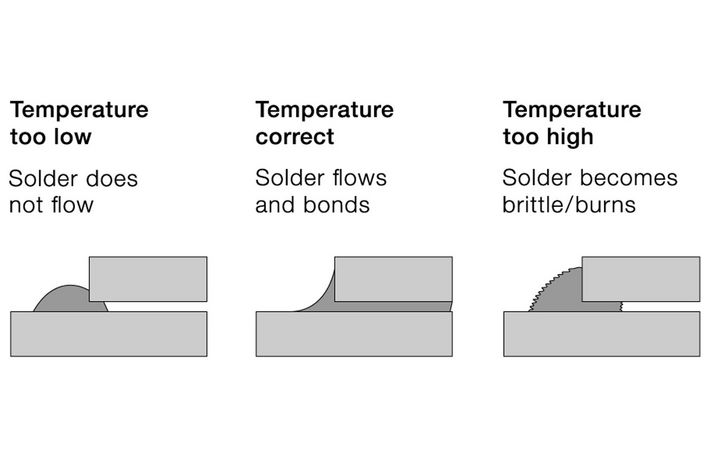In soldering, the mating parts are joined by a filler material, or solder. The melting temperature of the solder is lower than that of the component materials. As a result, only the solder is melted.
The mating parts are merely warmed. Once melted, the solder flows into the gap between the parts and bonds with the surface of the workpiece (diffusion bond). Soldering a joint requires access to only one side of the joint. The thin gap between the components functions like a capillary, drawing the liquid solder into the joint.


